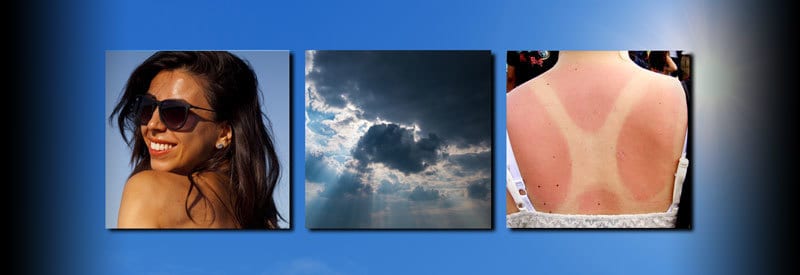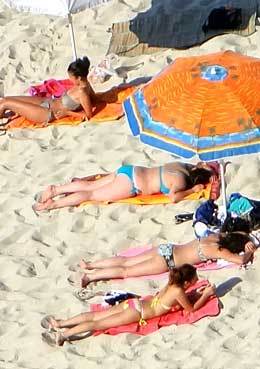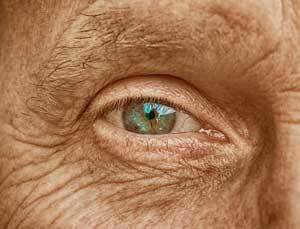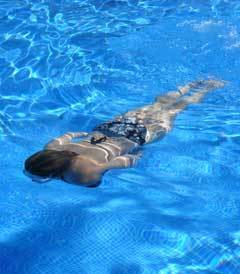Can You Tan Through A Window? A Look At The Sun’s Ability To Cause Sunburn Under Different Conditions

In many Western cultures, individuals prefer nicely tanned skin. You just feel and look healthier and more attractive. Despite official health warnings, many still seek the sun to get some "color" in their skin.
And this brings us to the subject of tanning. The trusted method of spending time or lying directly in the sun for a certain amount of time remains the most popular means of attaining a proper tan.
You can theoretically tan through a window, although it will take significantly longer than being exposed to direct sunlight. This occurs because a home or office window blocks approximately 97 percent of the Sun dangerous UV-B rays while only blocking 37 percent of its UV-A rays.
As recently as the late 20th century (and still today), people spend days in the sun with little protection to get that sought-after bronzed look. Only when the medical community raised the alarm about skin cancer and the link to sun exposure did society start to pay attention.
Since then, a lot happened to make tanning "safer." Sunbeds and tanning booths became very popular. "Tanning pills" and Melatonin 2 injections are also available, but all were shown to have questionable or severe side-effects. Some even worse than sun exposure.
With all these questionable, short-term, or dangerous alternatives available, many people decide to return to the "relative safety" of the sun. While taking care to limit time, avoid the most dangerous time of day, and using sunscreen, many are braving the sun every year.
As a result, an increasing number of questions get asked about the sun, tanning, and safety. This post examines what exactly tanning is and looks & addresses the common queries surrounding the subject. It also examines why extended UV exposure is so lethal.
Tanning Definition
Before we can delve into the different questions surrounding sun exposure and how it affects tanning, we first need to define what tanning is:
What Is Tanning?

Tanning is the process through which the human skin changes into a darker tone as a result of prolonged exposure to ultraviolet radiation from the sun.
It is the skin's defense mechanism to protect it from ultraviolet radiation by releasing a pigment called melanin which absorbs the radiation.
As the body release more melanin, the pigment darkens skin color, which is observed as a tan.
In low quantities, exposure to the sun is beneficial in more than one way. It helps you to look healthier by getting a base tan and also triggers the release of vitamin D. This vitamin is vital to maintain bone and teeth health and support the immune system.
A surprisingly small amount of sunlight is necessary to achieve this result. Unfortunately, many people spend a lot more time directly in the sun, sometimes without realizing it and without any protection as a result.
Harmful Effects Of UV Rays
Exposure to UV radiation becomes harmful when you spend a prolonged period of time in direct (or indirect) sunlight. Even if you take precautions, like wearing sunscreen, at some point, the amount of time exposed to the Sun's UV rays will outweigh any protection.
This exposure will lead to a number of short and long-term effects, which include:
Sunburn
Most of us are familiar with the sore red skin that we experience after spending too much time in the sun.
It has the short-term effect of experiencing sore red skin and the possible peeling of the upper layer of the skin at a later stage. Long-term effects are more severe, which include anything from sunspots, premature skin aging, and, finally, different types of skin cancer.
Premature Skin Aging & Skin Damage

One of the delayed impacts of long periods of UV exposure is premature skin again. An adult with this condition has skin that shows wrinkles that also became thick and leathery. These symptoms can show up surprisingly early in an adult's life.
Other forms of skin damage include sunspots and skin growths which may turn into a type of skin cancer if it turns malignant and left unchecked.
Eye Damage
Research shows that UV radiation can increase the risk of cataracts, which is the creation of a fogginess and loss of transparency in the eye lens. If untreated, it can lead to blindness.
Other forms of eye damage include skin cancer around the eyes, degradation of part of the retina called the macula, and also pterygium, which is a type of growth that can block vision.
Skin Cancer
Skin cancer is the most serious and potentially life-threatening effect of long-term exposure to the sun's ultraviolet rays. Like other forms of cancer, skin cancer also comes in different types and levels of severity.
It varies from small malignant growths that can be treated with procedures as simple as cryotherapy, to melanoma which is the most aggressive form of skin cancer that can spread to internal organs and be fatal if left untreated for too long.
One of the most deceptive parts of skin cancer is that many of the cases that appear and gets treated as an adult are the result of sun exposure the individual experienced as a child or teenager.
The Most Commonly Asked Questions Asked About Tanning And Sun Exposure
With much more social awareness of the dangers of sun exposure, as highlighted in the previous section, most people are more sensitive about recklessly venturing into the sun.
It also led to many questions about the conditions under which one can get sunburned. We take a look and answer some of the most commonly asked questions about sun tanning under different circumstances.
Can You Tan Through A Window?

It all depends on the type of window to which you are referring. Your average home or office window blocks 97 percent of all dangerous UV-B rays, which cause sunburn and skin cancer.
However, it blocks only 37 percent of UV-A rays. So, in this case, the answer is yes. You can get a tan, but it will take much longer than standing in direct sunlight.
A car window, however, is something completely different. Due to the plastic layer between the layers of glass, all UV-B radiation gets blocked, while 80 percent of UV-A rays are also blocked. So while you might get boiling in hot in a car, you will not get much of a tan at all.
Can You Tan In The Shade?
Surprisingly, the answer is yes. Again, you won't build up a tan as quickly as in direct sunlight. However, you will still receive enough UV exposure to build a healthy skin color over time.
This exposure is possible due to indirect UV radiation. As sunlight hits objects on the ground, it reflects and scatters UV rays in all directions, including into shaded areas.
You can read all about solar radiation and the different types of visible and ultraviolet light in this article.
Can You Get A Tan Through Clouds?
The answer is a resounding yes, and the reason many people get severely sunburned every year. You may not feel the heat of the sun or even see the sun, but that does not mean that you are not getting exposed to ultraviolet radiation.
In fact, clouds let through as much as 80 percent of all UV rays. Since one does not see or feel the sun's effects, a person can spend extended periods of time outside without any sun protection. This is what makes this atmospheric condition so dangerous.
Can You Get Vitamin D Through Glass?
Unfortunately, the answer here is no. The Sun does not provide the human body with vitamin D, but our bodies produce it through a chemical reaction as a result of ultraviolet radiation exposure.
The ultraviolet light needed to produce vitamin D, UV-B radiation, gets practically completely blocked by glass, as discussed in an earlier section. It blocks approximately 97 percent of all UV-B light, making it impossible for the body to produce vitamin D indoors or in your car.
Can You Tan Through Clothes?
This question goes hand in hand with the question, "Do clothes protect from UV rays?". The answer is yes, and no. It all depends on the color and type of fabric the clothes are made of:

Density & Thickness: Density and density play an important role. A thick and tightly woven fabric will keep UV rays out, while thin and see-through material will let large amounts of UV radiation through.
Color: Dark and colored clothing absorb rather than letting UV rays through, so it protects the skin from any UV radiation. Light colors, on the other hand, tend to allow UV rays through and expose the sun to ultraviolet light.
Composition: The type of material used in clothing also plays a significant part in the clothing's ability to protect against UV radiation. Some glossy polyesters are very effective at reflecting the Sun's UV rays altogether.
Some cotton that is unbleached also contains a type of lignin that absorbs UV radiation and provides protection against sunburn. Certain clothes are specifically designed to completely block out any ultraviolet light, which uses sun-protective materials.
As you will notice, it is impossible to give a definitive answer as to the capability of UV radiation to penetrate clothing and cause sunburn or give you a tan.
Can You Get Sunburn Under Water?
Like clothing, the answer is yes, and no. In principle, water can protect you from sunburn, but only when you are deep enough underwater.

Only 60 percent of UV-B rays get blocked by water at half a meter. Realistically, though, very few people who spend time in the ocean or swimming pool have any part of their bodies covered with more than a few inches (or centimeters) of water.
In fact, when you swim or stand in shallow water, half your body is completely exposed to direct sunlight. It also gets exposed to the UV radiation that is reflected from the water's surface. Potentially, you can get more sunburned in water than out of it.
So yes, you will be able to catch a tan in most instances since your body is only covered by a small amount of water most of the time. Only when you dive below a depth of one meter of water will it provide you with enough protection against any UV radiation.
Does Sunscreen Stop You From Tanning?
No, sunscreen will not stop you from tanning. It will slow down the speed at which you get a tan, though. Since it protects you from sunburn and its associated dangers, a certain amount of UV radiation gets blocked, but it will not prevent your body from producing melanin.
There are still dangers, though. Using a sunscreen with a low SPF (sun protective factor) will only protect your skin to a certain degree and for a limited time, after which you can still get severely sunburned.
Using sunscreen with a high SPF will make it longer for your skin to tan, but it will be much safer and protect you from sunburn.
Conclusion
As you can clearly see after reading this article, there so many different weather and environmental conditions influencing the way you tan or get sunburned that you have to take each scenario on a case by case basis to inform yourself on how to get a safe tan.
Other factors, such as infrastructure, clothing, and water, all play a role as well, which we covered in detail. Please note that there are still several other known and unknown factors that influence the sun's UV radiation and your skin's reaction to it.
The first aim of this post was to explain what tanning is and how it works. We then looked at why the Sun's ultraviolet radiation is so dangerous to the human skin. Finally, this article addressed the questions many people ask about tanning and the conditions surrounding it.
Even though some of the lesser asked questions were not covered in this article, by focusing on answering the most commonly asked ones as thoroughly as possible, you should be able to make the right deductions to answer most of these smaller questions for yourself.
If you like to be informed whenever a new article is released, and also receive helpful tips & information, you can stay updated by simply following this link .
